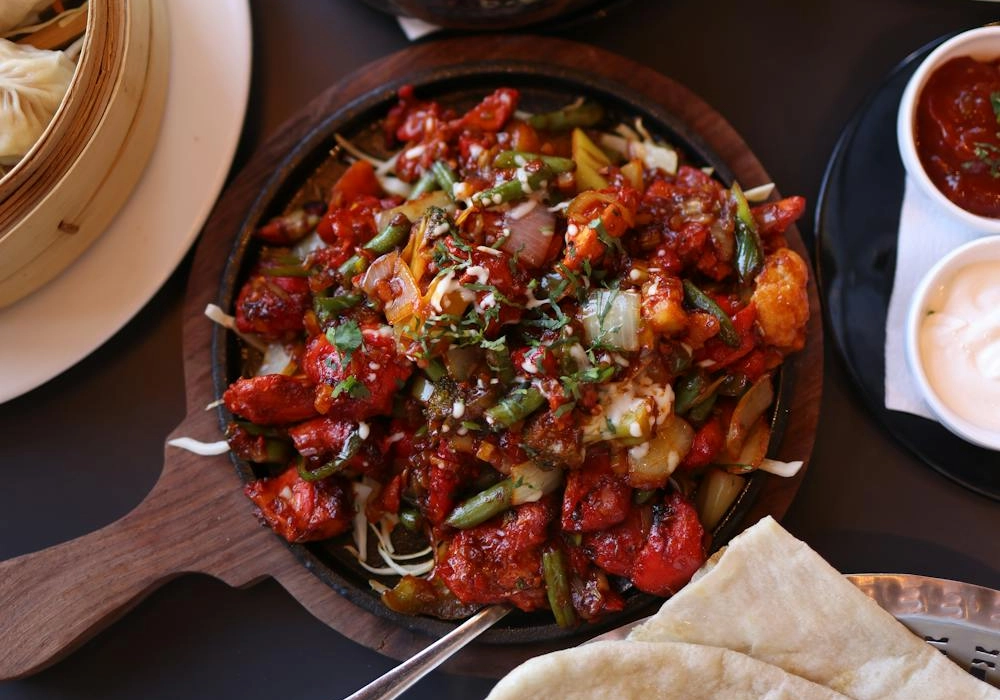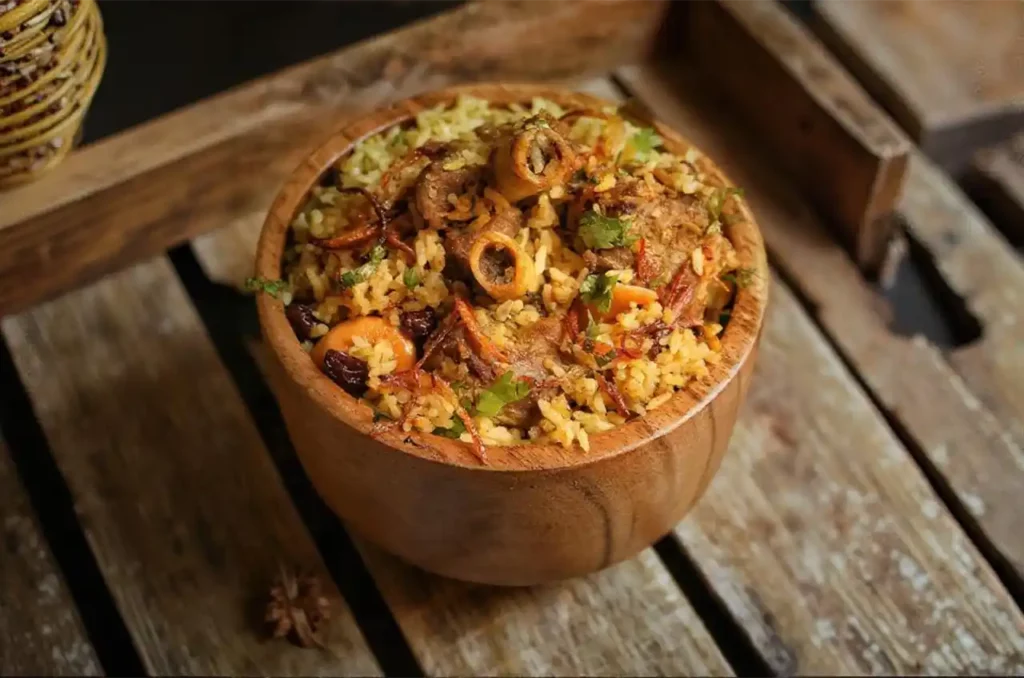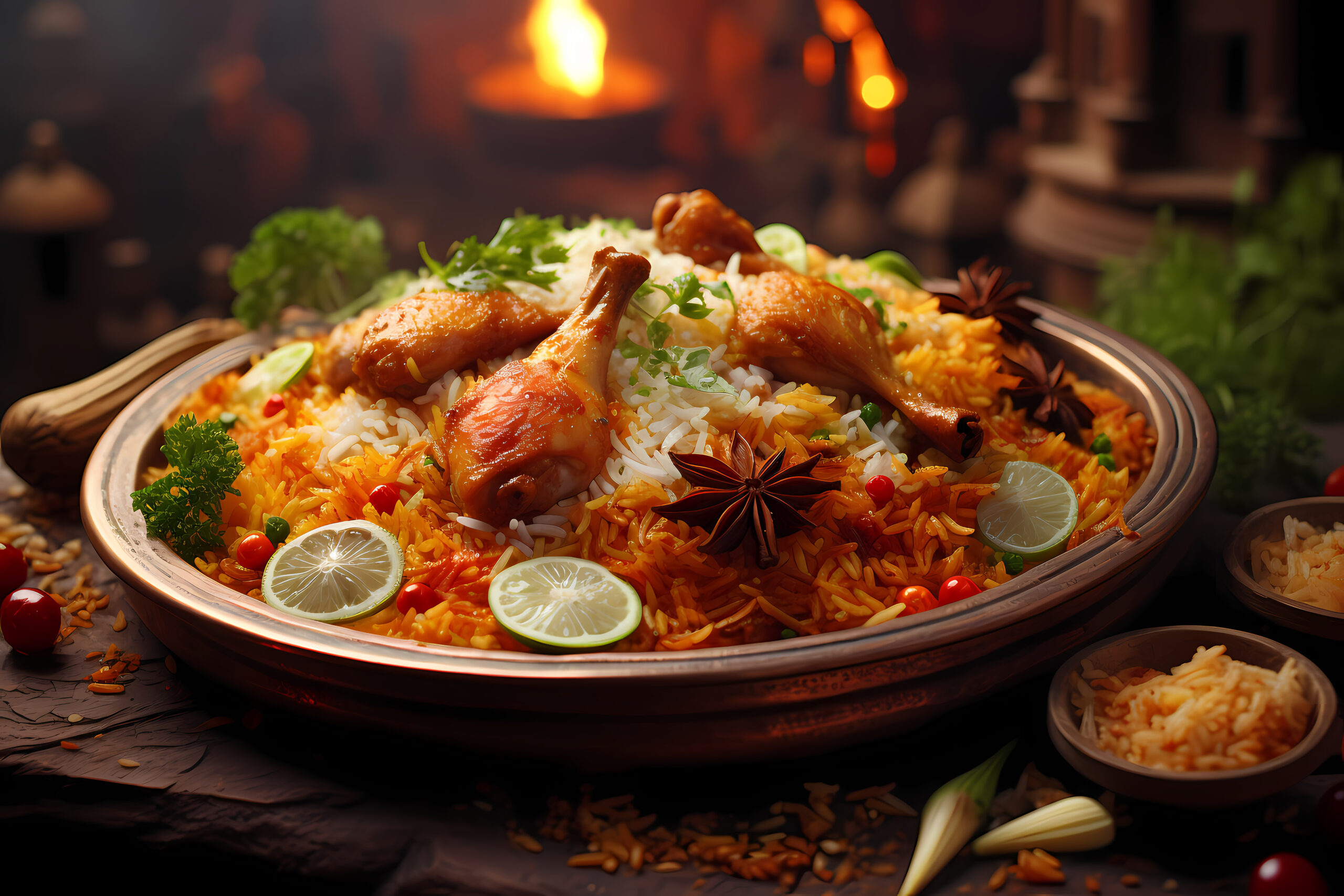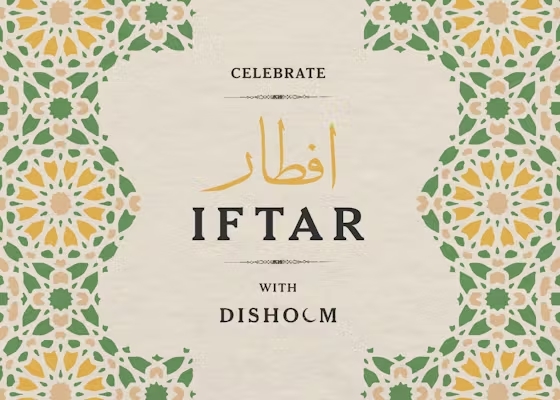The Global Journey of Biryani: From Persia to the World
Biryani is much more than a dish; it’s a fragrant thread woven through centuries, cultures, and continents. Each grain of rice, every spice, and the slow simmer of its iconic dum cooking method tell stories of empires, traders, migrants, and families gathering to share a meal. This dish that has captured hearts worldwide began a long journey—from the royal kitchens of Persia to the bustling streets of Southeast Asia and beyond.
At the core of biryani lies dum—an ancient cooking technique where rice and meat gently steam in a sealed pot, locking aromas and flavors inside. Wherever biryani travels, dum serves as its universal storyteller—preserving tradition while embracing new influences.
The Persian Origins: A Prelude in Pilaf
To understand biryani’s journey, we start in Persia, long before it became the famous layered rice feast we know today. There, a dish called pilaf—or pulao—was cherished. Picture long grains of rice cooked tenderly with fragrant spices, tender meat, dried fruits, and nuts. It was elegant yet simple, a dish of balance and grace enjoyed by Persian nobility and commoners alike.
This pilaf traveled along trade routes and royal conquests, planting its culinary roots in new lands. India, with its rich tradition of spices and rice cultivation, absorbed and transformed pilaf, setting the stage for biryani’s evolution.
Mughal India: Biryani Takes Form
The arrival of the Mughals in India during the 16th century was a turning point—not just politically but gastronomically. These rulers brought Persian tastes and combined them with the vibrant spices and ingredients of India. The result was biryani, a dish that layered basmati rice with marinated meat, infused with saffron, cardamom, cloves, and other spices, then sealed and slow-cooked using the dum method.
Each region in India gave biryani its unique voice:
- Hyderabad brought fiery heat balanced with yogurt and tangy flavors, a reflection of its Nizam heritage.
- Lucknow’s Awadhi biryani is subtler, with delicate layers of aroma and taste, reflecting royal sensibilities.
- In Kolkata, biryani adapted to tough times by adding potatoes, a symbol of resourcefulness during colonial scarcity.
Biryani was no longer just a meal; it became a celebration—a royal treasure served during festivals, weddings, and grand occasions.
Across the Seas: Biryani in the United Kingdom
The British Empire carried biryani beyond India’s borders. Indian soldiers, workers, and families moving to the UK brought their cherished dishes with them. In Britain’s curry houses, biryani offered a comforting taste of home for immigrants but also introduced the wider British public to its rich flavors.
Though dishes were sometimes adjusted for local tastes—milder spices and simpler presentations—the heart of dum-cooked biryani remained. To this day, cities like London, Birmingham, and Manchester have vibrant South Asian communities where biryani continues to thrive, symbolizing cultural pride and shared heritage.
The Middle East: Where Flavors Converge
Biryani found fertile ground in the Gulf states, where South Asian migrant communities flourished. Here, biryani mingled with local dishes like kabsa and mandi, blending spices and techniques. Chefs might add dried fruits like raisins and apricots or toss in nuts, creating rich textures against the fragrant rice.
Whether served in Dubai, Abu Dhabi, or Muscat, biryani became much more than an immigrant’s meal; it is a beloved dish embraced by locals and expats alike, a symbol of cultural fusion in a bustling cosmopolitan landscape.
Africa: Coastal Fusion and Fiery Innovation
Indian traders, settlers, and indentured workers brought biryani to East African ports like Mombasa, Dar es Salaam, and Zanzibar. Here, biryani absorbed Swahili flavors—think tangy marinades, the warmth of local spices, and often the inclusion of potatoes.
South Africa’s Durban biryani is famed for its fiery kick, showcasing how biryani can adapt to local tastes while staying true to its roots. These African versions are living proof of biryani’s ability to evolve and reflect the identity of the communities that cherish it.
Southeast Asia: New Aromas on Spice Routes
The aromatic journey continued into Southeast Asia—Malaysia, Singapore, and Indonesia—where biryani was embraced and transformed once again. Here, additional ingredients like pandan leaves add subtle floral notes; ghee-infused rice and regional meat choices give each version a distinct identity.
These adaptations demonstrate how biryani remains a living tradition—flexible, inventive, yet always respectful of its Persian-Mughal origins.
Dum: The Heartbeat of Biryani’s Story
Dum—the method of slow-cooking biryani in a sealed pot—is much more than a technique. It’s biryani’s storyteller, capturing generations of history, trade, migration, and adaptation in every simmering pot.
Sealed tight, the aromas mingle and deepen, secrets are locked away, and flavors knit themselves into a harmonious whole. Wherever biryani travels, the dum method ensures it carries the soul of its heritage while welcoming new regional voices.
Biryani Today: A Dish without Borders
From Persian courts of yore to contemporary street food stalls in Malaysia, from grand weddings in Hyderabad to Nairobi’s bustling markets, biryani has become a global ambassador of culture and connection.
Each biryani is a chapter in an ongoing story of human migration, cultural blending, and culinary delight. It reminds us that in shared meals, we discover shared histories—a universal language cooked slowly with patience, love, and spice.
So the next time you dig into a fragrant spoonful of biryani, remember you’re tasting centuries of stories, carried lovingly around the world by Dum’s gentle embrace.











